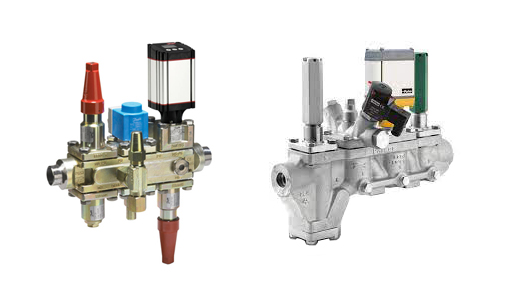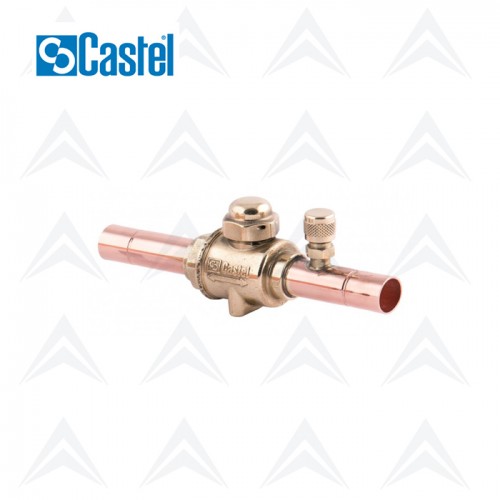Valves & regulators
Valves are placed in refrigerant lines and can restrict or even completely block the flow of refrigerant. Also, the regulator is other type of valves which modulate the flow rate of refrigerant in response to some variables, such as temperature, pressure, or liquid level. Expansion valve is a good example for this type of regulator. According to changing of pressure and temperature amount in suction line the position of stem in expansion valve is changed and regulates the flow rate of refrigerant.
In HVAC and refrigeration industries, different types of valves and regulated are used to control as well as manage the flow of refrigerant and maintain adequate pressure.
Valves and regulators help to control the flow of fluids as well as gases. We can mention main types of valves that are common using in refrigeration systems as below:
- Shut-off valves
- expansion valves
- check valves
- solenoid valves
- level control valves
- pressure-regulating valves
Check valve
A check valve is an automatic device that allows fluids to cross in a single direction inside a pipeline or a conduit. A check valve works by using a pressure differential to open and close. If the pressure on the inlet side is greater than the pressure on the outlet side, the valve will close. The check valves can be installed in any section of a refrigeration system where it is necessary to avoid the consequences from undesirable flow inversion, with respect for the operating limits and the yields.
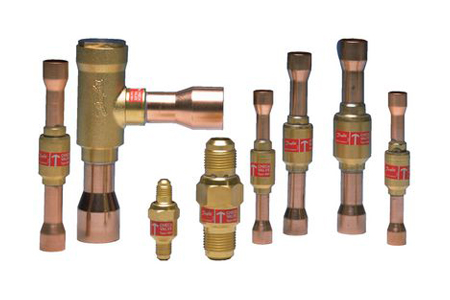
Shut-off valve
The refrigeration shut-off valve is designed for using a valve stem to close and sealing automatically, so the refrigeration shut off valve can be installed on any position of the refrigeration system, as long as the refrigeration system needs to close because of the refrigerant flow. There are some different shut-off valves such as ball valve and gate valve in refrigeration field.

Solenoid valve
A solenoid valve is an electrically controlled valve with a fast response time and low power consumption that can be used effectively in multiple areas of an HVAC and refrigeration system. The detailed description of the solenoid valve can be found on the dedicated solenoid valve section.
Pressure regulating valve
Pressure regulators can be installed on suction, hot gas and liquid lines, ensuring constant pressure to refrigeration and air conditioning systems. There are various types of pressure regulating valves such as; Capacity, Start pressure, Condensing pressure regulators, Evaporator pressure regulators and etc.

Expansion valve
Expansion valves are components capable of taking refrigerant from its condensation pressure to its evaporation pressure. The detailed description of the expansion valve can be found on the dedicated Thermostatic expansion valve and Electronic expansion valve sections.
Safety valve or relief valve
Safety or relief valve is a device that open and close refrigerant flow path when the pressure inside a refrigeration system becomes too high. They are designed to installation on evaporator, condenser, receiver and other points in commercial and industrial refrigeration and HVAC systems.
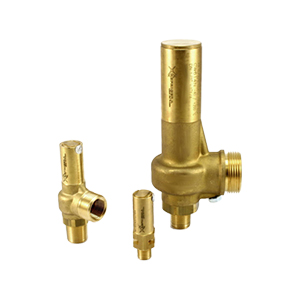
Level control valve
Level control valve, which includes Float valve and liquid level regulating valve, are used to control the flow liquid level in refrigeration, freezing and air conditioning plant. Level control valves mostly be used for ammonia systems and flooded evaporators.
Float valve
A float valve, which opens and closes based on the level of liquid in the tank, can be used to manage the liquid level. A float valve controls the valve mechanically. Float valves are industrial instrument that are often used in industrial refrigeration systems to manage liquid levels and sometimes are used as throttling units in large refrigeration systems. The float valve can be used in high pressure, low pressure, and medium pressure applications.

Liquid level regulating valve
To control the liquid level in the refrigeration, freezing and air conditioning units, a liquid level regulating valve usually used with a floating valve together. Liquid level regulation valves can be used on the evaporator and condenser side according to application. A liquid level regulation valve in a refrigeration system operates a solenoid valve to maintain the level of liquid refrigerant in a float valve when the liquid inside the float drops.
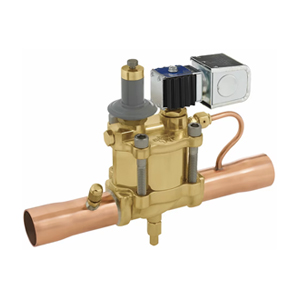
Valve Station
The valve station has several functions in one housing, which can replace a series of valves. The valve station provides many advantages in the piping design of refrigeration plants and also in the installation, service and maintenance. The valve station usually is used in large refrigeration systems with co2 or ammonia (R-717) refrigerants.
